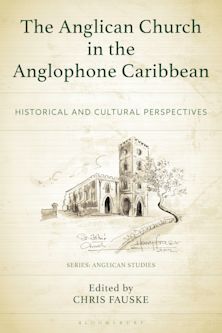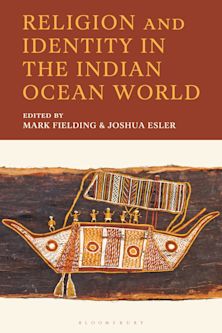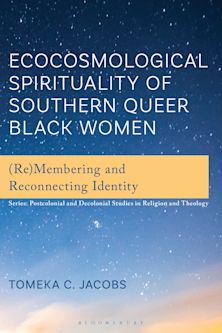- Home
- ACADEMIC
- Religious Studies
- Religious Studies - Other
- A Communication Perspective on Interfaith Dialogue
A Communication Perspective on Interfaith Dialogue
Living Within the Abrahamic Traditions
Daniel S. Brown Jr. (Anthology Editor) , Greg G. Armfield (Contributor) , Diana I. Bowen (Contributor) , Adrienne E. Hacker Daniels (Contributor) , Kenneth Danielson (Contributor) , Maria Dixon (Contributor) , Paul Fortunato (Contributor) , James Keaten (Contributor) , Padma Kuppa (Contributor) , Elizabeth McLaughlin (Contributor) , Rose M. Metts (Contributor) , Ramesh Rao (Contributor) , Charles Soukup (Contributor) , Barbara S. Spies (Contributor) , Mark Ward Sr. (Contributor)
A Communication Perspective on Interfaith Dialogue
Living Within the Abrahamic Traditions
Daniel S. Brown Jr. (Anthology Editor) , Greg G. Armfield (Contributor) , Diana I. Bowen (Contributor) , Adrienne E. Hacker Daniels (Contributor) , Kenneth Danielson (Contributor) , Maria Dixon (Contributor) , Paul Fortunato (Contributor) , James Keaten (Contributor) , Padma Kuppa (Contributor) , Elizabeth McLaughlin (Contributor) , Rose M. Metts (Contributor) , Ramesh Rao (Contributor) , Charles Soukup (Contributor) , Barbara S. Spies (Contributor) , Mark Ward Sr. (Contributor)
You must sign in to add this item to your wishlist. Please sign in or create an account
Description
Communication theory provides a compelling way to understand how people of faith can and should work together in today’s tumultuous world. In A Communication Perspective on Interfaith Dialogue, fifteen authors present their experiences and analyses of interfaith dialogue, and contextualize interfaith work within the frame of rhetorical and communication studies. While the focus is on the Abrahamic faiths, these essays also include discussion of Hinduism and interracial faith efforts. Each chapter incorporates communication theories that bring clarity to the practices and problems of interfaith communication. Where other interfaith books provide theological, political, or sociological insights, this volume is committed to the perspectives contained in communication scholarship. Interfaith dialogue is best imagined as an organic process, and it does not require theological heavyweights gathered for academic banter. As such, this volume focuses on the processes and means by which interfaith meaning is produced.
Table of Contents
Chapter 1: Communication Theory Meets Interfaith Dialogue
Daniel S. Brown, Jr.
Chapter 2: Managing the Anxiety and Uncertainty of Religious Otherness: Interfaith Dialogue as a Problem of Intercultural Communication
Mark Ward, Sr.
Chapter 3: Humanizing and Dehumanizing Responses Across Four Orientations to Religious Otherness
Charles Soukup and James Keaten
Chapter 4: Rhetorology and Interfaith Dialogue
Adrienne E. Hacker Daniels
Part 2: Applications
Chapter 5: A Narrative Approach to Interfaith Dialogue: Explanations & Recommendations
Kenneth Danielson
Chapter 6: St. Francis and the Sultan: Adaptive Structuration Theory
Barbara S. Spies, OFS
Chapter 7: Hope Analysis: Pathways, Agency, and Interfaith Dialogue
Daniel S. Brown, Jr.
Chapter 8: The Power of Living Parables for Transformative Interfaith Encounters
Elizabeth W. McLaughlin
Chapter 9: Memory and Interfaith Dialogue in the Context of Globalization
Diana I. Bowen and Paul Fortunato
Chapter 10: Speech and Silence as Rhetorical Space: Lessons from an Inter-Racial Church
Rose M. Metts
Part 3: Challenges
Chapter 11: Not in my Sandbox: Organizational Culture, Identity, and Interfaith Collaboration
Maria Dixon and Greg G. Armfield
Chapter 12: Hindu Interfaith Discourse: Spiral of Silence as a Theological Inevitability
Ramesh N. Rao and Padma Kuppa
Chapter 13: The “God Problem” In Interfaith Dialogue: Situating Divine Speech in the Seven Traditions of Communication Theory
Mark Ward, Sr.
Product details
| Published | Jan 30 2013 |
|---|---|
| Format | Ebook (Epub & Mobi) |
| Edition | 1st |
| Extent | 240 |
| ISBN | 9780739178713 |
| Imprint | Lexington Books |
| Publisher | Bloomsbury Publishing |
About the contributors
Reviews
-
In our culture of ideological division where voices compete for attention as they propagandize and polarize political and religious establishments, this engaging collection calls for authentic dialogue and civility. It also seeks to build-bridges among faith traditions in thoughtful ways that effectively transcend the divide and speak to the wider society.
Robert H. Woods, Spring Arbor University
-
This collection moves from the fundamentals of communication theory and interfaith dialogue to the application and challenges of those principles. Clearly it is not enough to know the doctrinal and cultural differences found in our pluralistic religious environments, one must also understand the obstacles that separate us from the other. A Communication Perspective on Interfaith Dialogue is an important contribution to breaking down the walls that hinder our progress toward peace and understanding.
Richard K. Eckley, Houghton College


































